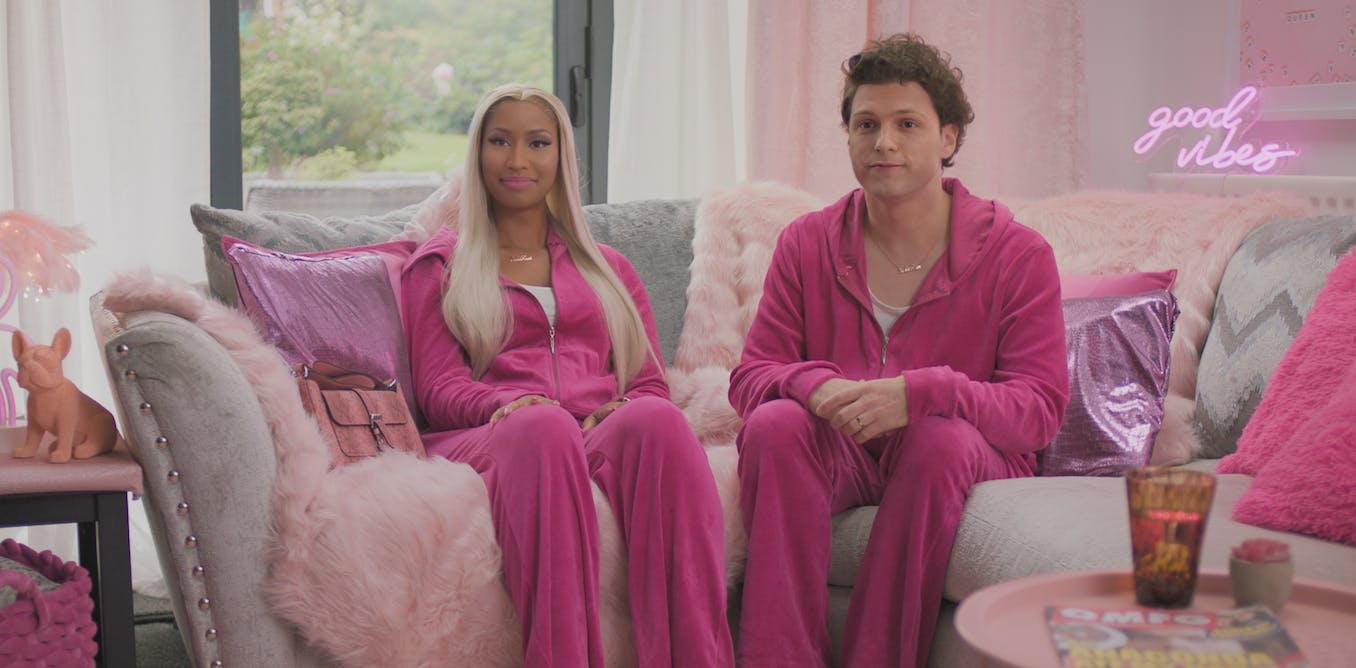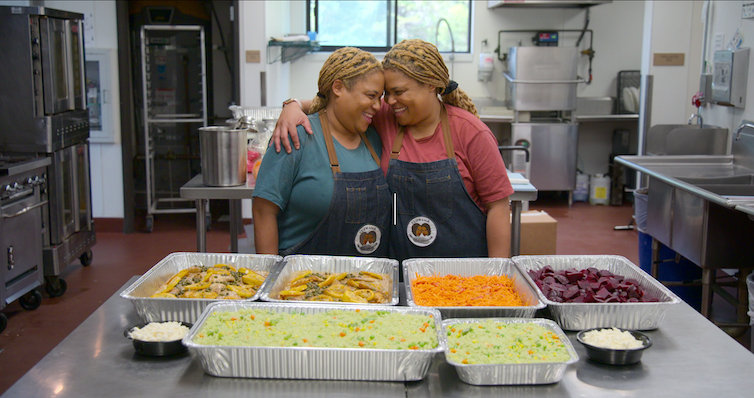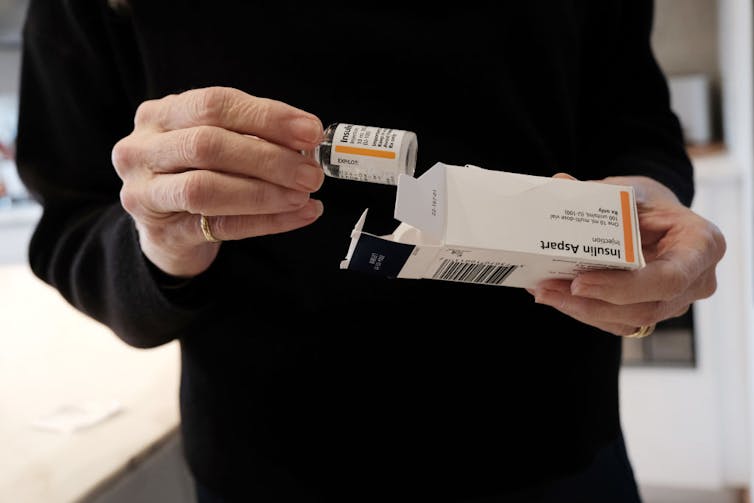ITVX’s Deep Fake Neighbour Wars is the breakthrough in television’s use of artificial intelligence that experts in the cultural use of deepfakes like myself have been waiting for.
In this six-part series, celebrities have apparently invaded our everyday lives. Presented as a reality TV show, we meet suburban neighbours in Catford, south London. Idris Elba (handyman/delivery driver) takes pride in the garden behind his ground-floor flat, until new upstairs tenant Kim Kardashian (bus driver) starts to exercise her right to use the shared space. They recount the story of a dispute that ultimately turns to violence.
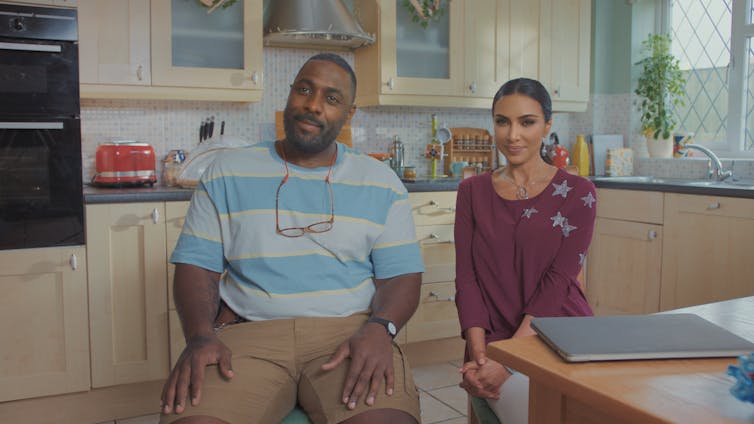
Tiger Aspect Productions
In a second storyline set in Southend, Greta Thunberg (single mum) has adopted the sunny coastal Essex town to escape the cold of northern Sweden, until she confronts neighbours Conor McGregor (florist) and Ariana Grande (scaffolder) – Christmas decoration fanatics with a permanent display of noisy, flashing reindeer in front of their bungalow. Cue high drama when Thunberg takes justice into her own hands.
It’s a brilliant play on the mockumentary, a genre that brought us film comedy classics such as This Is Spinal Tap (1984) and Borat (2006, 2020), and TV hits like Parks and Recreation (2006-2015).
The creative potential of deepfakes
Deepfakes sound suspicious just from their name, which tells us immediately that we’re being deceived. Many producers now prefer the term “synthetic media” to avoid this connection.
The major ethical issue with deepfakes is the idea that they’re trying to trick us – but this isn’t a problem when they’re used for obvious comedy.
It may look like Idris Elba is living an alternative reality in Catford, but we laugh because we know clearly that this isn’t the real thing. Deepfakes can twist and rejuvenate pop culture through their playfulness, while also challenging us to consider what we accept as real.
As philosopher Adrienne De Ruiter explains, “deepfake technology and deepfakes are morally suspect, but not inherently morally wrong.”
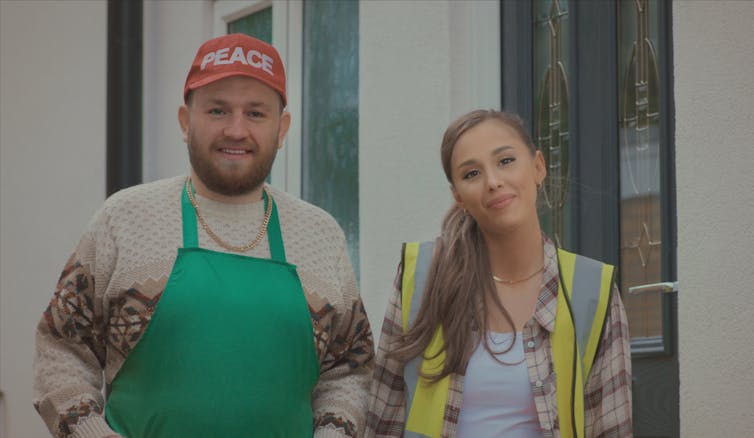
Tiger Aspect Productions
This year marks a watershed moment for deepfakes. The technology is at a cultural crossroads in which the primary use in its early years – non-consensual pornography – is being overshadowed by the technology’s adoption by mainstream popular culture.
Neighbour Wars follows on from other attempts to use deepfakes in television. In 2020, Channel 4’s Alternative Christmas Message featured Queen Elizabeth II speaking to the nation during the pandemic.
At that time, broadcast deepfakes were made by colossal visual effects (VFX) companies – Channel 4’s Christmas message was made by the UK’s Framestore, which also created the VFX for big movies including Doctor Strange and Fantastic Beasts.
Trey Parker and Matt Stone (makers of South Park) also tried out deepfakes in 2020. They posted a 15-minute spoof consumer rights programme, Sassy Justice, on YouTube. Its fictitious host, consumer advocate Fred Sassy, was played by a deepfake Donald Trump.
Sassy Justice was a true forerunner of Deep Fake Neighbour Wars, as it created multiple deepfake celebrities also including Julie Andrews and Mark Zuckerberg. The video’s hokey visual style spoofed low-budget daytime TV and joked with our gullibility, ensuring its audience was always aware of its AI origins.
‘It’s all the real thing’
Smaller online content creators have been the main innovators of deepfakes in pop culture. Corridor Digital was set up by two geeky guys from Minnesota – Sam Gorski and Nico Pueringer – who moved to Los Angeles to produce viral videos.
When deepfakes emerged, they jumped on the technology and produced a breakout video, Keanu Reeves Stops A Robbery, in 2019. As deepfakes expert Lisa Bode writes, Corridor Digital’s work demonstrated how the technology was “widely available and now affordable, or even free, in the case of open-access deepfake generation face replacement apps like Faceswap”.
The team’s YouTube channel now features dozens of short deepfake videos, many of them boasting how they can do visual effects better than Hollywood studios.
Chris Ume is a Belgian deepfake creator who stunned the online world in 2022 when he produced short videos of Tom Cruise at such a high level of resolution and believability that only the script reassured us they were fake.
Ume has taken his deepfake expertise into the world of mainstream TV. In August 2020, he entered America’s Got Talent with collaborator Tom Graham. The pair brought singer Daniel Emmet on to the stage and rolled a TV camera directly in front of him. When Emmet began to sing, his image on the massive screen above was deepfaked live into that of Simon Cowell performing You’re The Inspiration.
The delighted audience and judges progressed the act to the show’s final. As with comedy, this use of deepfakes avoided any sense of deception (the real Simon Cowell was sitting with the jury, aghast).
The future of deepfakes
The music industry is set to become a rich area for deepfakes, and artists have already begun experimenting with the technology.
Last year, Kendrick Lamar released The Heart Part 5, with a video using deepfakes to transform him into OJ Simpson, Nipsey Hussle and Kobe Bryant. Lamar’s groundbreaking work was quickly followed by fellow rapper Kanye West adopting deepfakes in his video for Life of the Party.
Like a magician’s act, deepfakes create wonder (and fear) – and like all new technologies, this AI generates a buzz. Deep Fake Neighbour Wars shows that deepfakes don’t need to remain as short online clips; they can now be used to make longform TV content. Expect ITV’s venture to be the tip of the iceberg.

